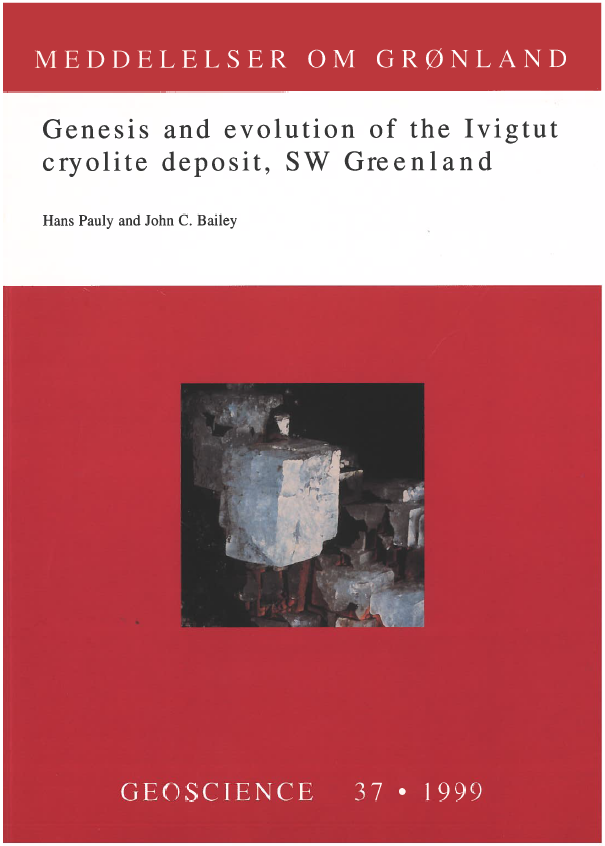Genesis and evolution of the Ivigtut cryolite deposit, SW Greenland
DOI:
https://doi.org/10.7146/moggeosci.v37i.140693Abstract
The Mid-Proterozoic Ivigtut granite pipe enclosed a cryolite deposit of 12.3 million tons with cross-cutting contacts. The deposit was sharply divided into siderite-cryolite, pure cryolite, fluorite-cryolite and fluorite-topaz units which overlay a large siderite-quartz unit.
Stage 1 of the deposit began with violent brecciation of the granite wall rocks surrounding an eastern extension of the deposit. In the siderite-cryolite unit, the siderite and sulphides formed a three-dimensional network texture enclosing cm-sized cryolite masses. This texture together with dm- to m-sized banding/layering probably formed from a lubricated mush of plastic cryolite and solid siderite plus sulphides. The banding/layering may have developed from plastic, glacier-like movements or during the advance of a crystallization front. Although there is no evidence for cryptic changes in the minerals of the siderite-cryolite unit, a residual pure cryolite unit developed and a subsequent deficiency in Na led to the appearance of chiolite-rich material.
In stage 2, Na-poor fluids accumulated in a large residual cavity. Gas-driven explosions led to partial collapse of the cryolite roof and its penetration by cryptocrystalline topaz. Some fluorite was partly mixed with cryolite forming the fluorite-cryolite while the remainder accompanied topaz in the underlying fluorite-topaz unit. An influx of water gave rise to nests of mica whereas Sr-Ba minerals such as jarlite, bøgvadite and barite crystallized later in fissures and pockets. Two breccia chimneys broke through the margin of the deposit.
In stage 3, vertical fissures formed explosively and were filled by fluidized emplacement of prosopite and cryolite. Secondary aluminofluorides formed in cavernous masses and smaller cavities by reactions between trapped H2O-rich solutions and stage 1 cryolite.
The deposit formed when F-rich post-magmatic fluids from deeper parts of the Ivigtut granite intensively leached, metasomatized and eventually re-mobilized the top, central part of the granite pipe forming a homogeneous supercritical fluoride melt. Prior to any recorded event, this melt may have undergone immiscible separation into upper fluoridic and lower siliceous masses carrying the same dispersed carbonate-sulphide phase.

Downloads
Published
How to Cite
Issue
Section
License
Coypyright by the authors and the Commision for Scientific Research in Greenland / Danish Polar Center. No parts of the publications may be reproduced in any form without the written permission by the copyright owners.

